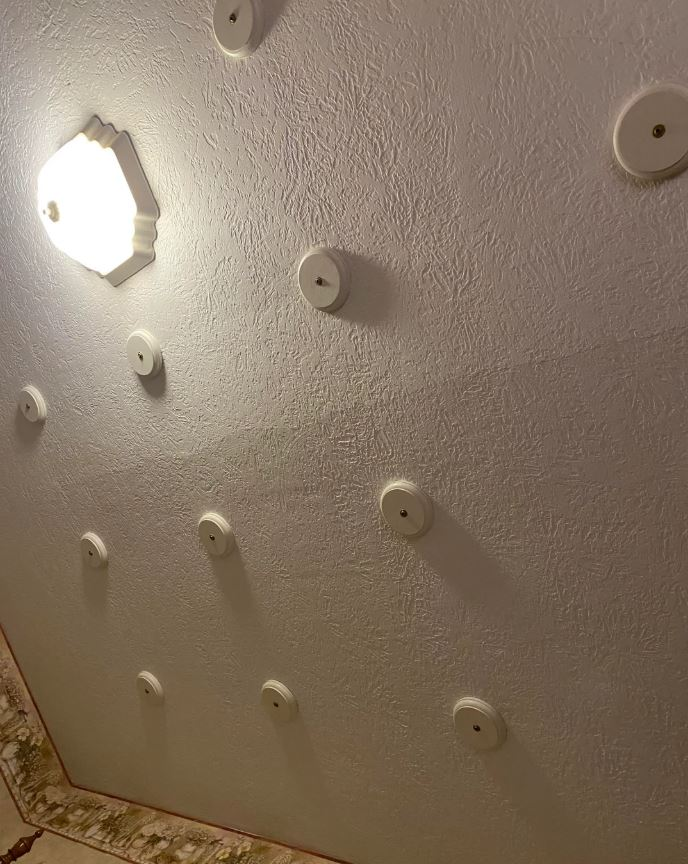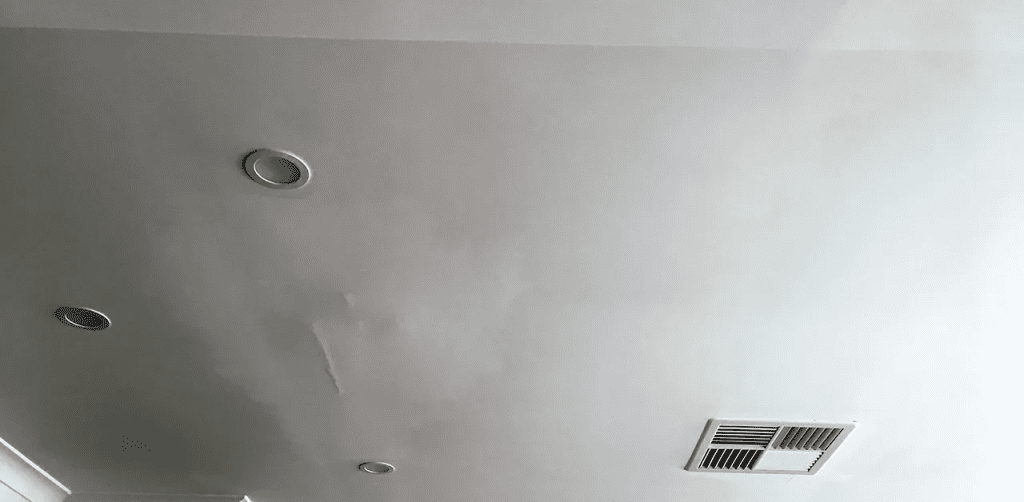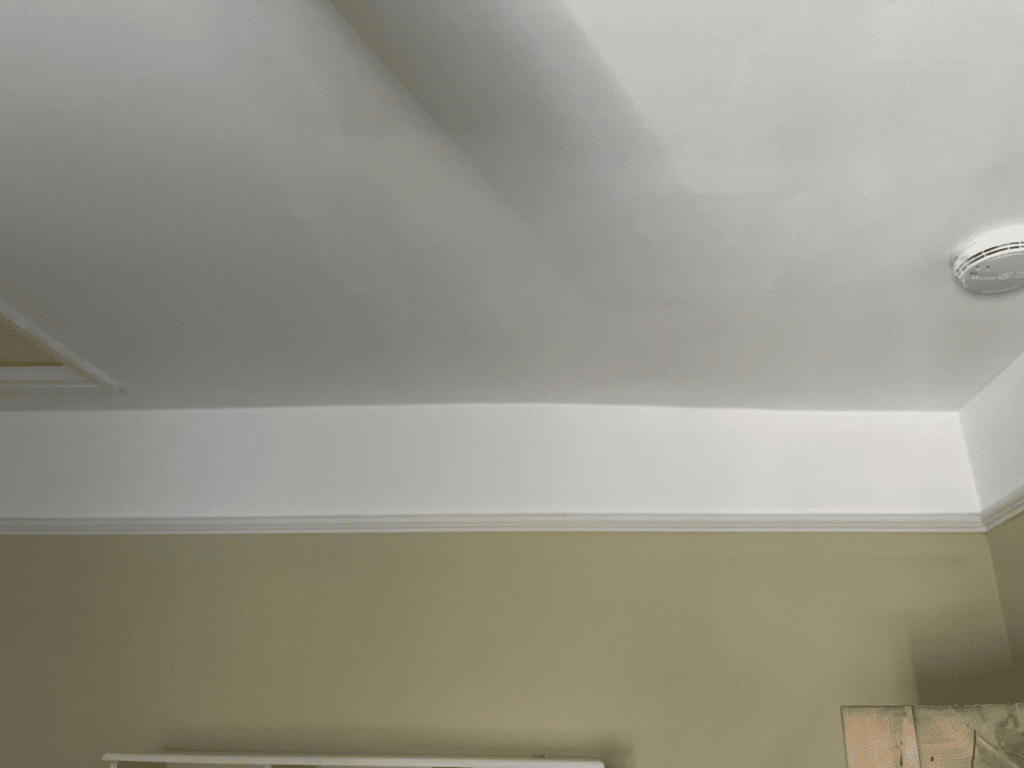Ever find yourself lying in bed, staring up at the ceiling, and wondering, what on earth are those wooden circles doing up there? Maybe you thought it was some quirky attempt at rustic decor—or a failed DIY lighting project. I did too. Until I looked a little deeper. And once I learned the truth, I couldn’t unsee it.
Spoiler: those little discs aren’t decorations. They’re genius. And they’ve been saving old ceilings from disaster for decades.

A Ceiling Crisis Hidden in Plain Sight
Back in the day, before drywall took over, builders used what’s called “lath and plaster” to construct ceilings. They’d nail thin wooden strips (lath) across the joists, then spread wet plaster over the top. As it dried, the plaster would grip the lath and create a smooth, solid ceiling.
Sound sturdy? It was. Until time came knocking.
After 70, 80, even 100 years, that plaster starts to give up. It dries out, detaches from the lath, and begins to sag. Sometimes the whole thing crumbles and rains down in chunks. (Been there. My lamp and I are still recovering.)
So, what do you do when your ceiling’s about to collapse, and you can’t just screw it back together? That’s where those odd-looking wooden discs come in.
Video: Easiest wall FIX EVER!
Wooden Ceiling Discs: Simple, Smart, and Seriously Effective
Here’s the clever part: plaster is brittle. You can’t just jam a screw through it and expect it to hold. It’ll crack like a dry cookie. So what’s the workaround?
You use small, flat wooden discs—each about the size of a silver dollar—and screw them through the plaster and into the lath. These discs spread out the pressure and gently pull the plaster back into place. No cracks. No mess.
Imagine trying to hold down a tarp in a storm. A single nail would rip right through it. But a wide washer? That’ll keep it steady. Same concept here—just a lot more charming.
Metal Washers vs. Wooden Discs: Aesthetic or Efficiency?
Today, hardware stores sell metal plaster washers that do the same job. They’re easy to find, easy to use, and totally functional. But if you’re working on an older house—or just love a vintage touch—wooden discs carry a certain nostalgic charm.
They blend into the ceiling better, especially once painted. And they feel like part of the home’s original craftsmanship, not an afterthought.
If you ask me, they don’t just fix the ceiling—they add character.
My Own Brush With Ceiling Drama

Let me tell you a quick story.
Years ago, I was renting this creaky 1920s bungalow with all the charm—and all the structural issues. One day, I noticed the dining room ceiling sagging. Not just a little. Like, soft tortilla hanging from the ceiling sagging.
A total replacement was out of my budget. So I went old-school. I grabbed a drill, a box of pre-cut wooden discs, and mapped out a grid across the damaged area. One by one, I screwed the discs in, gently coaxing the plaster back into place.
Once it was painted? You’d never guess it had nearly collapsed. That fix held for years. And it cost me next to nothing.
Sometimes, the simplest solutions are the most brilliant.
Why You Only See Them in Certain Rooms
Here’s something you might’ve noticed: those ceiling discs tend to show up in just one room. Not the whole house. Why?
Because usually, it’s just that room with the problem. Maybe a bathroom leak above it, or maybe it caught the worst of the seasonal temperature shifts. Homeowners—and hotels too—tend to fix what’s absolutely necessary, and leave the rest alone.
So, if you see those discs in a bedroom or random hallway, odds are that part of the ceiling had a rougher past than the rest.
To Hide or Highlight: That Is the Question
Video: How to fix dropped sagging ceiling
Should you leave those wooden dots exposed? Or cover them up with compound and paint?
Totally up to you.
Some folks love the look—it’s like a visual timestamp, proof that someone cared enough to fix instead of demolish. Others want a clean, modern ceiling and prefer to patch over them completely.
Personally? I kind of love the story they tell. Like brush strokes in an old painting, they make the space feel alive. Real. Imperfect in the best way.
A Deeper Message Behind the Discs
Let’s zoom out for a second.
In today’s world of “just toss it and get a new one,” these wooden ceiling discs feel like rebellion. A quiet act of preservation. A nod to the idea that repair has value. That something broken is still worth saving.
They’re not just there to hold plaster. They’re holding on to a philosophy. One of patience, creativity, and working with what you’ve got.
Conclusion: Old Ceilings Have Secrets—And Stories

So next time you find yourself staring at those odd wooden circles above your head, don’t dismiss them. They’re more than weird ceiling dots. They’re battle scars. Badges of honor. Proof that even in decay, there’s dignity—and a little bit of ingenuity.
Old homes don’t just stand—they endure. And those humble little discs? They’re part of the reason why


